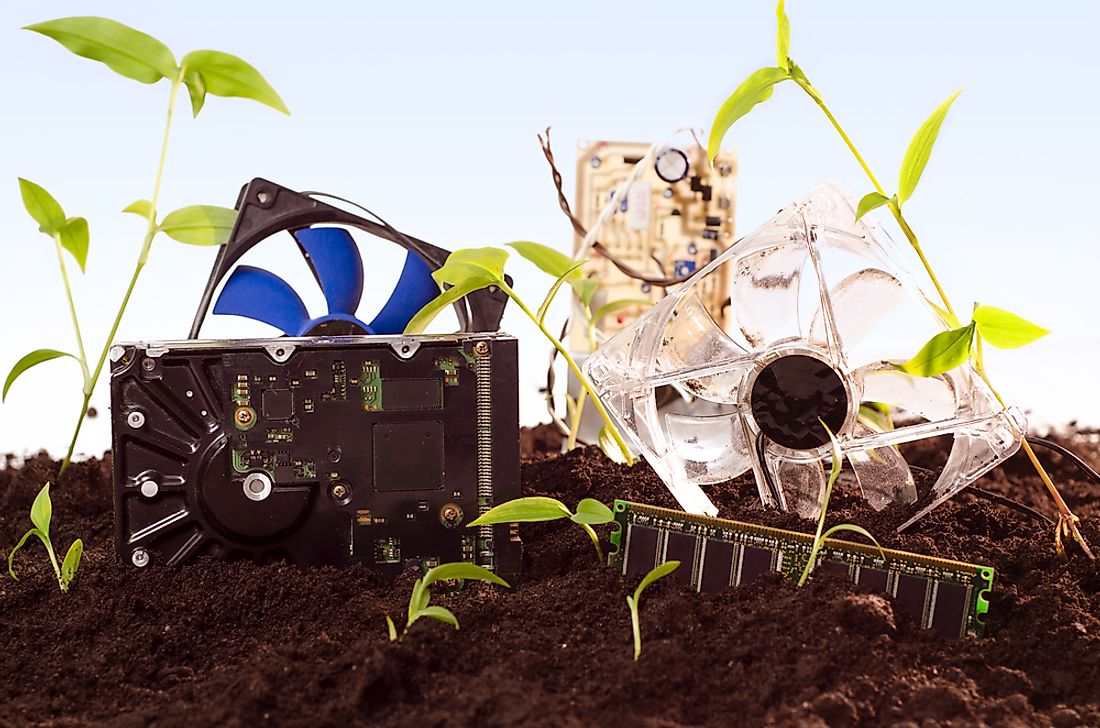What Happens to Electronic Waste?

- 30 million computers are disposed of in the US alone every year
- EPA estimates 50 million metric tons of E-waste enters the landfill each year
- When not properly disposed of harms the environment but it is also a lost recycling opportunity.
What Happens to Electronic Waste?
Electronic waste, also known as E-waste, is a major concern in today's modern world. E-waste is described as the discarded electrical or electronic devices destined for salvage, reuse, disposal, recycling, or resale. Examples of E-waste include TVs, CD players, cell phones, VCRs, printers, monitors, fax machines, PDAs, and computers among others. Since the advancement of technology evolves at a rapid rate, many electronic devices are becoming trash after only a few years of service. As a matter of fact, whole categories of old electronic devices contribute to the accumulation of E-waste such as VCRs which were replaced by DVD players and DVD players which were replaced by blu-rays.
Overview of E-waste and its Distribution
Electronic devices that have become obsolete continue to fill up landfills throughout the world. About 30 million computers are disposed of in the US alone every year, while Europe discards about 100 million phones with fewer than 20% of them being properly recycled while the rest goes to landfills and incinerators. The Environmental Protection Agency estimates that approximately 50 million metric tons of E-waste enters the landfill each year. Electronics that are not adequately disposed of contain harmful materials such as cadmium, lead, beryllium, and mercury. Such materials can only be seen as trace elements but when they add up in volume they can pose a significant threat to the environment. When E-waste is not properly disposed of, not only is it bad for the environment but it is also a lost recycling opportunity. Most electronic waste comprises of some recyclable material like metal, plastic or glass.
What are Proper Disposal Methods?
After obsolete or unused electronics are thrown away as trash, two things can happen: the E-waste can either sit in a landfill or it can be recycled and used to create new products. As the demand for smart electronic products grows, so does the amount of E-waste. Most consumers are aware of how to dispose of unused or old electronics, but it boils down to convenience, knowledge, and the willingness to properly dispose of e-waste. Instead of throwing away old cell phones, DVDs, tablets, Ipads, laptops, or computers in the trash, the proper protocol would be to take the e-waste to a donation center, recyclers, or an electronic take-back program. Once discarded electronics are taken to such facilities, some are refurbished by recyclers who use humans to sort out the e-waste or separation devices to salvage the usable materials. However, it is often easier to ship e-waste to developing countries. In developing countries, the process of recycling e-waste is not properly regulated, and safe methods are rarely used. China remains a major dumping ground for e-waste from developed countries.
Environmental Impact of E-waste
There are some arising issues concerning the environment as a result of dismantling and disposing of electronic waste in developing countries. Both atmospheric and liquid releases find their way into water bodies, soil, groundwater, and air thus affecting sea and land animals both wild and domestic. Crops consumed by humans and animals as well as drinking water are affected by the harmful components of e-waste materials.
Security Information
Electronic waste poses a potential threat to the safety of both the individuals and countries exporting the materials. If private information is not properly erased before discarding a computer, hard drives can be reopened exposing private information that was once stored in the device. Such information includes private financial data, online transaction records which can be accessed, credit card numbers, and account information.











